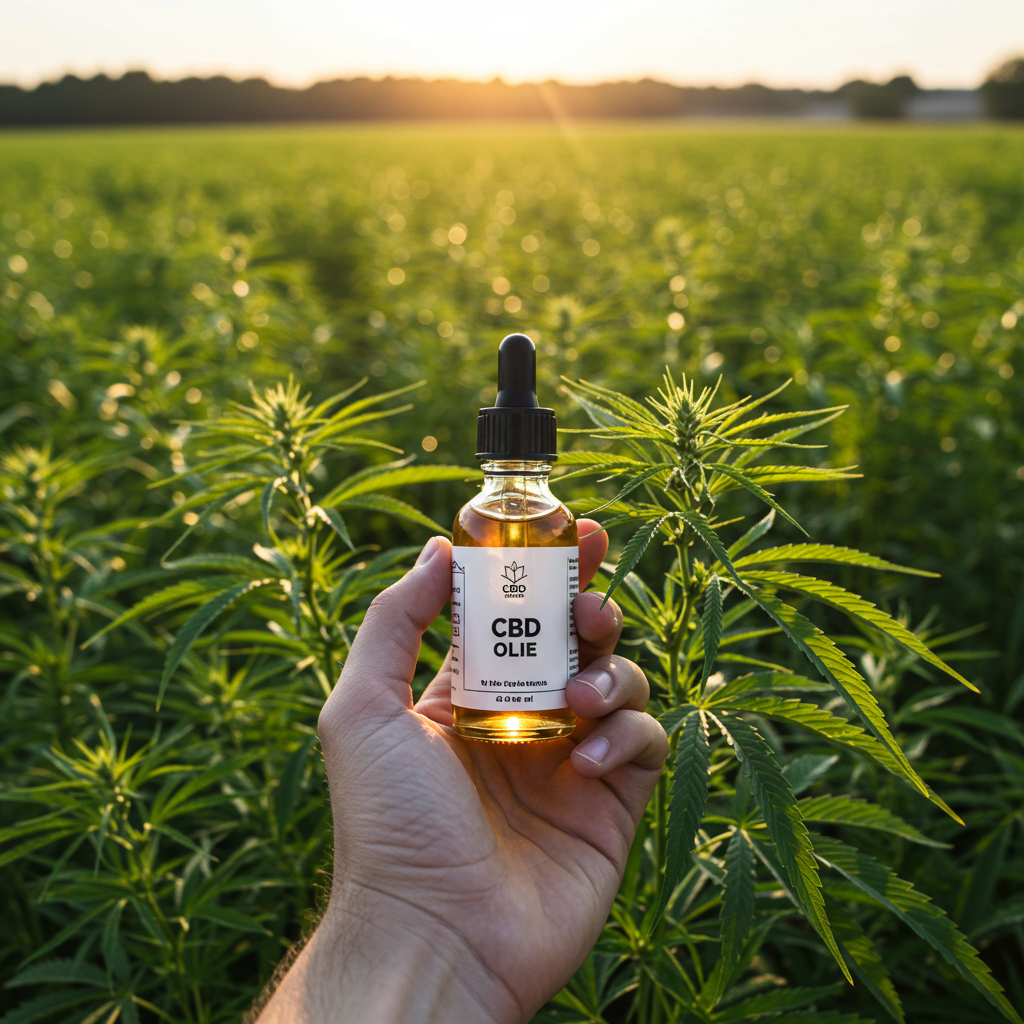Cannabidiol, better known as CBD, has gained significant popularity in recent years. This comprehensive guide is designed for both beginners and experienced users to provide clear and reliable information about CBD. From its origins and effects to practical tips and scientific insights, this guide covers everything you need to know to make informed decisions about CBD use.
What is CBD?
CBD is one of over 100 cannabinoids found in the cannabis plant. Unlike THC, the psychoactive compound in cannabis, CBD is non-psychoactive, meaning it doesn’t produce a “high.” It is typically extracted from hemp, a variety of cannabis with low THC levels, and is used in products like oils, capsules, edibles, and creams.
CBD interacts with the body’s endocannabinoid system (ECS), which regulates functions such as sleep, mood, pain, and immune response. By influencing ECS receptors, CBD may promote balance and well-being without intoxicating effects.
The History of CBD
The use of cannabis for medicinal purposes dates back thousands of years, with references in ancient Chinese, Egyptian, and Indian texts. CBD as a distinct compound was first isolated in the 1940s, but its potential gained attention in the 21st century with growing scientific interest and changing regulations. Today, CBD is widely studied and used for its potential therapeutic benefits.
How Does CBD Work?
The endocannabinoid system (ECS) consists of receptors (CB1 and CB2), endocannabinoids, and enzymes. CBD indirectly influences these receptors, potentially enhancing the body’s natural ability to maintain balance. It also interacts with other systems, such as serotonin receptors, which may explain its effects on mood and anxiety.
Unlike THC, which binds directly to CB1 receptors in the brain, CBD’s action is more subtle, modulating receptor activity without causing psychoactive effects. This makes it appealing for those seeking relief without altered mental states.
Benefits of CBD
Research and anecdotal evidence suggest CBD may offer various benefits, though results vary by individual. Some potential benefits include:
- Pain Relief: CBD may reduce chronic pain by influencing pain pathways and reducing inflammation.
- Anxiety and Stress Reduction: Studies indicate CBD may lower anxiety and promote relaxation.
- Improved Sleep: Many users report better sleep quality when using CBD.
- Anti-inflammatory Effects: CBD’s anti-inflammatory properties may help with conditions like arthritis.
- Neuroprotection: Early research suggests CBD may support brain health in conditions like epilepsy or neurodegenerative diseases.
- Skin Health: Topical CBD products may benefit conditions like acne or eczema.
While promising, CBD is not a cure-all, and more research is needed to confirm its efficacy for specific conditions.
Forms of CBD
CBD is available in various forms, each suited to different needs and preferences:
- CBD Oil/Tinctures: Taken sublingually for fast absorption.
- Capsules: Convenient for precise dosing.
- Edibles: Gummies or chocolates offer a tasty option, though effects take longer.
- Topicals: Creams and balms for localized relief.
- Isolates: Pure CBD without other cannabinoids.
- Full-Spectrum CBD: Contains other cannabinoids and terpenes for an “entourage effect.”
- Broad-Spectrum CBD: THC-free but includes other beneficial compounds.
Choosing the right form depends on your goals, lifestyle, and how your body responds.
Explore Our CBD Products
Check out the best products from Nordic Oil, crafted to support your well-being. Use the code smokeflix20 to get 20% off your order!

How to Use CBD
Dosage
CBD dosage varies based on factors like body weight, metabolism, and the condition being addressed. Beginners should start with a low dose (e.g., 5-10 mg daily) and gradually increase until the desired effect is achieved. Consulting a healthcare professional is recommended, especially if you’re taking medications.
Methods of Use
- Sublingual: Place oil under the tongue for 30-60 seconds for quick absorption.
- Oral: Capsules or edibles are swallowed and take 30-90 minutes to take effect.
- Topical: Apply directly to the skin for localized issues.
Timing
For chronic issues, consistent daily use may be most effective. For acute symptoms like anxiety, CBD can be taken as needed. Effects vary by method, with sublingual acting faster than edibles.
Is CBD Safe?
CBD is generally considered safe, with a low risk of serious side effects. However, some users may experience:
- Dry mouth
- Drowsiness
- Changes in appetite
- Diarrhea
- Fatigue
CBD can interact with certain medications, particularly those metabolized by the liver (e.g., blood thinners). Always consult a doctor before combining CBD with medications.
High doses may lead to tolerance, so sticking to recommended doses is advised. Quality matters—choose products from reputable brands with third-party lab testing to ensure purity and potency.
Regional Differences in CBD Legality
The legal status of CBD varies widely across countries and regions. In some areas, CBD is fully legal for medicinal and recreational use, while in others, it may be restricted or permitted only with specific regulations. Always check local laws before purchasing or using CBD to ensure compliance and avoid legal issues.
CBD and Drug Tests
Full-spectrum CBD contains trace amounts of THC, which could accumulate in the body and potentially trigger a positive drug test. If drug testing is a concern, opt for broad-spectrum or isolate CBD products, which are THC-free.
Choosing Quality CBD Products
With the growing CBD market, quality control is critical. Look for:
- Third-Party Lab Testing: Ensures accurate CBD/THC content and no contaminants.
- Transparency: Reputable brands share lab results (Certificates of Analysis).
- Source: Hemp grown in regulated environments is less likely to contain pesticides or heavy metals.
- Extraction Method: CO2 extraction is considered safe and effective.
- Ingredients: Avoid products with artificial additives or fillers.
Reading reviews and researching brands can help you avoid low-quality products.
CBD for Beginners: Tips
- Start Low and Slow: Begin with a small dose and adjust gradually.
- Choose the Right Product: Oils or tinctures are versatile for beginners.
- Check Quality: Prioritize lab-tested products from trusted brands.
- Track Effects: Keep a journal to monitor how CBD affects you.
- Be Patient: Effects may take time, especially for chronic conditions.
CBD for Experienced Users: Advanced Insights
For those familiar with CBD, consider:
- Experiment with Ratios: Full-spectrum products with different CBD:THC ratios may enhance effects.
- Combine Methods: Use topicals for pain and oils for systemic relief.
- Microdosing: Small, frequent doses may maintain steady effects.
- Terpenes: Products with specific terpenes (e.g., linalool for relaxation) may target specific outcomes.
- Stay Updated: Follow new research to optimize your CBD use.
Myths and Misconceptions About CBD
- Myth: CBD gets you high.
Fact: CBD is non-psychoactive and doesn’t cause a high. - Myth: All CBD products are the same.
Fact: Quality, potency, and type vary widely. - Myth: CBD works instantly for everyone.
Fact: Effects depend on the individual and method of use. - Myth: More CBD is always better.
Fact: Optimal dosing is key; excess may reduce effectiveness.
The Future of CBD
The CBD industry continues to evolve with ongoing research and innovation. Scientists are exploring its potential for conditions like Alzheimer’s, cancer, and mental health disorders. As regulations develop, access to high-quality CBD is likely to improve, benefiting consumers worldwide.
Conclusion
CBD offers exciting possibilities for wellness, from pain relief to stress management. Whether you’re new to CBD or an experienced user, understanding its effects, forms, and quality standards is essential. By starting with reliable products, experimenting thoughtfully, and staying informed, you can make the most of what CBD has to offer. Always consult a healthcare professional for personalized advice, and enjoy exploring the world of CBD!
